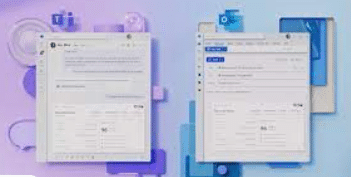While the newest version of Windows 10 has arrived as promised, don’t rush to install it. Think of this as the best time to see what your PCs are running already, then plan ahead.
If I didn’t know better, I’d say Windows 10 21H2 is bashful.
Since being announced in July it’s been overshadowed by its upstart replacement, Windows 11 21H2. Finally, however, Windows 10 21H2 is out.
That doesn’t mean I recommend users install it immediately. I prefer a more measured approach and want to wait a bit to ensure my vendors are ready for it. That makes this a good time to review your hardware to ensure you don’t have machines on older platforms that are nearly out of support. So let’s review what’s still supported, how long it will be supported, and which version of Windows you should be planning to move to.
Of the released and supported versions of Windows 10 currently supported for Home and Professional users, 21H1 is now officially considered to be in broad deployment (as of Nov. 3) and will be supported until Dec. 13, 2022 for both Windows 10 Home and Professional. Windows 10 20H2 is supported until May 10, 2022. And last but not least, Windows 10 2004 is the version I urge you to upgrade to as soon as possible; it drops out of support in less than a month: Dec. 14. Windows 10 2004 will receive its last update on that date. To remain protected, you’ll need to ensure that your Windows 10 setup is upgraded to 20H2 or 21H1 after that date. (Microsoft has indicated it “will continue to support at least one Windows 10 Semi-Annual Channel until Oct. 14, 2025.”)
Windows 10 Enterprise and Education versions have a slight divergence in support timelines. Though Windows 10 2004 aligns with Home and Professional (and loses support on Dec. 14), Windows 10 1909, which is actually older, is still supported until May 10, 2022. Windows 10 20H2 is supported until May 9, 2023, a full year after its Home and Professional counterparts, and Windows 10 21H1 is supported until Dec. 13, 2022 — matching its Home and Professional counterparts.
Why the differing dates? Because the Spring releases of Enterprise and Education have a much longer life cycle support than do the Home and Professional versions.
If you a home user who’s been waiting to install 21H1, keep in mind that I’ve seen several PCs that were never pushed to later feature release versions. (This happens especially if your machine is off more often than it is online.) I strongly recommend that you click on Start > Settings > System > About and double-check what version you have installed. You may find a machine that is not on the latest supported feature release even though you thought it was up to date.
This will ensure Windows Update only offers up that specific version (21H1) and not 21H2.
Before deploying any feature release, I always make sure to have a valid backup so if I need to roll back to the prior version I can. Then I delay the install, figuring that any issues will be found by the time I move forward. My policy is to not be the first to deploy a feature release, nor the last to be on a feature release.
For business deployments, you have various options to deploy Windows 10, ranging from Windows Software Update Services, to Intune, to a simple script to deploy the feature release. During the early years of Windows 10 deployments, I would often take the Windows 10 ISO and extract it on the network. Then I would use a script to silently deploy it to the network and kick off a reboot. This would ensure that the installation would be after hours and not be disruptive. Furthermore, I could stage it throughout the office and do installs at various times and for various zones — rolling out the feature releases over time.
For example, you can use the following script to deploy the currently posted feature release:
The final line indicates that the install will happen quietly and not bother users with final setup questions.
Recently the Far West System Management group held an online meeting discussing how to manage and deploy Windows 11. Basically, you can use the same tools you use to manage and deploy feature releases for Windows 10 for Windows 11. All four of those sessions can be viewed online, including presentations by Aria Carley, senior product manager, Microsoft; Michael Niehaus, product manager, Tanium; Mike Danoski, product manager, Microsoft; Max Stein, Intune support team, Microsoft; and Johan Arwidmark, technical fellow, 2Pint Software. If you are an IT pro, I highly recommend that you take the time to review these videos. And remember, Windows 11 will have an annual feature release process, not the twice-yearly release cadence as Windows 10.
Bottom line: 21H2 is out, but don’t install it immediately. Rather, use it as a sign that you should be evaluating what feature release you are currently on and how many months you have before it falls out of support. There’ll be time to get 21H2 later.



